Electronics News
Archive : 21 August 2015 год
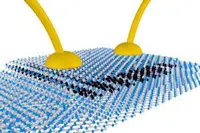 Research by University of Manchester scientists is said to have made 'dozens' of 2D materials with unusual properties available to those developing new products.
Research by University of Manchester scientists is said to have made 'dozens' of 2D materials with unusual properties available to those developing new products.
According to the team, the problem has been that most 2D materials are unstable in air, so react and decompose before their properties can be determined.
However, by protecting the new reactive crystals with more stable 2D materials, such as graphene, via computer control in a specially designed inert gas chamber environments, these materials can be successfully isolated to a single atomic layer.
The team, led by Dr Roman Gorbachev, used its fabrication method to study two 2D crystals that have generated intense scientific interest in the past 12 months but are unstable in air – black phosphorus and niobium diselenide.
Dr Gorbachev said: "This is an important breakthrough in the area of 2D materials research, as it allows us to dramatically increase the variety of materials that we can experiment with using our expanding 2D crystal toolbox."
It is believed that, by combining a range of 2D materials in stacks, scientists will be able to create 'materials to order' to meet the demands of industry.
High frequency electronics for satellite communications and light weight batteries for mobile energy storage are two application areas that may benefit from this research.
Author
Graham Pitcher
Source: www.newelectronics.co.uk
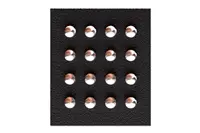 Silicon Labs has introduced the latest member of its EFM8 eight-bit MCU portfolio designed for ultra-low-power, small-footprint IoT applications with capacitive touch sensing requirements. The EFM8SB1 Sleepy Bee MCUs, available in a 1.78 x 1.66 mm wafer-level chip-scale package, are claimed to be the industry's smallest MCUs.
Silicon Labs has introduced the latest member of its EFM8 eight-bit MCU portfolio designed for ultra-low-power, small-footprint IoT applications with capacitive touch sensing requirements. The EFM8SB1 Sleepy Bee MCUs, available in a 1.78 x 1.66 mm wafer-level chip-scale package, are claimed to be the industry's smallest MCUs.
The MCUs are suitable for touch-based, battery-powered and space-constrained IoT and industrial applications requiring long battery lifetimes and energy-efficient human interfaces, including wearables, remote controls, Bluetooth accessories and eReaders, as well as industrial automation, home automation and office equipment.
The EFM8SB1 Sleepy Bee MCUs are said to be Silicon Labs' most energy-friendly eight-bit devices offering sleep mode power of 50nA with full memory retention and brown-out detection, and a 2µs wake-up time. Featuring core speeds of up to 25MHz, and flash sizes ranging from 2 to 8kByte, the MCUs also integrate a capacitive sense controller offering <1µA wake-on-touch capability and 12 capacitive touch channels.
The MCUs offer a mix of analogue and digital peripherals including a high-resolution capacitance-to-digital converter, a 12-bit analogue-to-digital converter, high-performance timers, and SPI, I2C and UART serial ports. These peripherals are configurable and accessible to developers through Silicon Labs' crossbar technology.
Author
Tom Austin-Morgan
Source: www.newelectronics.co.uk
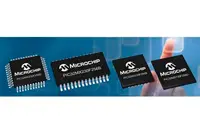 Microchip has announced an expansion within its PIC32MX1/2 32-bit MCU family that features a 256KByte Flash configuration and 16KByte of RAM in small-footprint packages down to 6 x 6mm. These latest additions to its MCU family are said to provide flexibility to low-cost applications that need complex algorithms and application code, as well as software and tools for designs in graphics, touch sensing and general-purpose embedded control.
Microchip has announced an expansion within its PIC32MX1/2 32-bit MCU family that features a 256KByte Flash configuration and 16KByte of RAM in small-footprint packages down to 6 x 6mm. These latest additions to its MCU family are said to provide flexibility to low-cost applications that need complex algorithms and application code, as well as software and tools for designs in graphics, touch sensing and general-purpose embedded control.
The PIC32MX1/2 MCU series features up to 50MHz/83DMIPS performance for executing control applications and mTouch capacitive touch sensing. Additional features include an eight-bit Parallel Master Port for graphics or external memory; a 10-bit, 1Msps, 13-channel ADC, support for SPI and I2S serial communications interfaces and USB device/host/On-the-Go functionality.
Designers seeking to launch consumer products with capacitive touch screens, touch buttons or sliders, as well as USB device/host/OTG connectivity, can benefit from the functionality of the PIC32MX1/2 series of MCUs. These MCUs are also suited for medical and industrial applications, which include displays with touch-sensing capabilities, in addition to general-purpose embedded control and connectivity capabilities.
The PIC32MX1/2 MCUs are available in 28-pin QFN, SPDIP and SSOP packages and 44-pin QFN, TQFP and VTLA packages.
Author
Tom Austin-Morgan
Source: www.newelectronics.co.uk
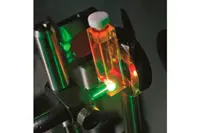 Advances in manufacturing technology for quantum dots at Oregon State University may lead to a new generation of LED lighting that produces a more user-friendly white light, while using less toxic materials and low-cost manufacturing processes that take advantage of simple microwave heating.
Advances in manufacturing technology for quantum dots at Oregon State University may lead to a new generation of LED lighting that produces a more user-friendly white light, while using less toxic materials and low-cost manufacturing processes that take advantage of simple microwave heating.
Researchers say the cost, environmental, and performance improvements could produce solid state lighting systems that would help cut lighting bills by almost 50% compared to the cost of incandescent and fluorescent lighting.
A key to the advances is the use of both a 'continuous flow' chemical reactor, and microwave heating technology that is similar to microwave ovens.
The continuous flow system is said to be fast, cheap, energy efficient and cuts manufacturing costs. Plus, the researchers say, the microwave approach will translate into development of nanoparticles that are exactly the right size, shape and composition.
"There are a variety of products and technologies that quantum dots can be applied to, but for mass consumer use, possibly the most important is improved LED lighting," said Greg Herman, an associate professor and chemical engineer in the OSU College of Engineering. "We may finally be able to produce low cost, energy efficient LED lighting with the soft quality of white light that people really want."
Some of the best existing LED lighting being produced at industrial levels uses cadmium, which is highly toxic. The system currently being tested and developed at OSU is based on copper indium diselenide, a much more benign material with high energy conversion efficiency.
Quantum dots are nanoparticles that can be used to emit light, and by precisely controlling the size of the particle, the colour of the light can be controlled. They have been used for some time but can be expensive and lack optimal colour control. The manufacturing techniques being developed at OSU, which should be able to scale up to large volumes for low-cost commercial applications, will provide new ways to offer the precision needed for better colour control.
The technology may also be incorporated into lighting displays, computer screens, smart phones, televisions and other systems.
Other applications of these systems are also possible. Cell phones and portable electronic devices might use less power and last much longer on a charge. And 'Taggants', or compounds with specific infrared or visible light emissions, could be used for precise and instant identification, including control of counterfeit bank notes or products.
Pic: In this University of Chicago demonstration, a green laser excites quantum dots suspended in a fluid
Author
Tom Austin-Morgan
Source: www.newelectronics.co.uk
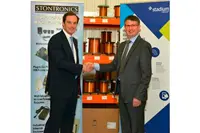 Stadium Group Plc has acquired Stontronics in a deal following a sequence of technology acquisitions by the company as it pursues a growth strategy in the electronics arena.
Stadium Group Plc has acquired Stontronics in a deal following a sequence of technology acquisitions by the company as it pursues a growth strategy in the electronics arena.
"This exciting acquisition supports our Group strategy to build a leading design-led electronic technology solutions group with a portfolio of value-adding complementary products, design and integration capabilities," Charlie Peppiatt, ceo of Stadium Group said. "We aim to simplify the supply chain and reduce time to market for our customers."
Stontronics will join Stadium's Technology Products division and work alongside their existing Power Products business, Stadium Power. The Stadium Group says it can now offer wireless M2M connectivity, intelligent interface display systems, PCB assembly and box build, customised power products and now, due to this acquisition, a range of standard and semi-customised power products to its customers from a single source.
Paul Branston, managing director of Stontronics added: "Stontronics' extensive range of power products, strong supplier network and established distribution partnerships complements Stadium Power, offering synergies, economies of scale and a much stronger proposition to our mutual OEM customers."
Pic: Charlie Peppiatt, ceo of Stadium Group and Paul Branston, managing director of Stontronics
Author
Tom Austin-Morgan
Source: www.newelectronics.co.uk
 More than 70 students took part in this year's electronics and computer science summer school organised by Dr Geoff Merrett and Dr Reena Pau of the University of Southampton. The annual summer school aims to attract prospective undergraduate students from across the UK and beyond to experience university living and learning.
More than 70 students took part in this year's electronics and computer science summer school organised by Dr Geoff Merrett and Dr Reena Pau of the University of Southampton. The annual summer school aims to attract prospective undergraduate students from across the UK and beyond to experience university living and learning.
The week-long course included lab work, lectures from leading academics, and visits to specialist facilities, such as the Tony Davies High Voltage Laboratory, the Southampton Nanofabrication Centre and Professor Mark Nixon's Biometric Gait Chamber.
The summer school provided A-Level students with an introduction to degree courses from electronic and electrical engineering to computer science and software engineering. Activities included using disguises to learn how facial recognition technology works, and visiting J P Morgan and Imagination Technologies to discover how technical skills are applied in business and industry.
Throughout the week students worked on a team challenge to design a technological solution for social good, before presenting their ideas to an audience of judges, parents and peers. The winning team conceived a sensor system for the homes of elderly and disabled people, which used image processing to recognise falls and would contact healthcare professionals as necessary. They claimed that their idea would decrease response time to accidents and foster a feeling of security for vulnerable people in their homes.
In a survey 100% of participants stated that they enjoyed taking part in the course, and now feel more informed about degrees and careers in electronics and computer science. Following the course, 44 students are intending to apply for degrees in electronics or computer science.
The organisers were delighted that over a quarter of participants were girls, a figure greatly above the national average for female students enrolled on electronics and computer science degrees. Johanna, a participant from Dorset, commented: "I am definitely doing a Bachelors in Computer Science."
Next year's electronics and computer science summer school at the University of Southampton will take place from 25 to 29 July 2016. Students about to start Year 12 can register their interest now.
Pic: Students take part in an electronics lab session with Dr Geoff Merrett
Author
Tom Austin-Morgan
Source: www.newelectronics.co.uk

